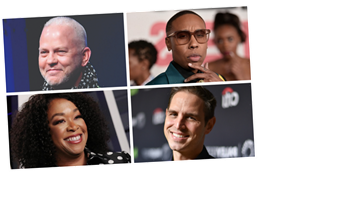
GLAAD, the world’s largest LGBTQ media advocacy organization, has released its annual Where We Are On TV report, finding largely positive numbers that stem from just four showrunners. Shonda Rhimes, Ryan Murphy, Lena Waithe and Greg Berlanti were responsible for one in every five LGBTQ characters on TV.
The study found that 9.1% of series regular characters on scripted primetime television this season are LGBTQ, a slight decrease from last year’s record high. For the first time, the report found that over half of LGBTQ characters on cable are people of color. While the steady numbers may look good from the outside, the fact that four powerhouse creators did the lion’s share of the work shows how tenuous such milestones are.
This marks the 25th year that GLAAD has tracked the presence of LGBTQ characters on television, and the 16th edition of the Where We Are on TV study.
“In the midst of a destructive pandemic, a long overdue cultural reckoning with racial injustice, and a transition into a new political era for this country, representation matters more than ever as people turn to entertainment storytelling for connection and escape,” said GLAAD President Sarah Kate Ellis in a statement. “This time of unprecedented change matched with increased demand represents an opportunity to break new ground with stories we have not seen before and create LGBTQ characters that do not reinforce harmful stereotypes.”
GLAAD found a decrease in representation of characters living with HIV, down to three from last year’s nine, all of whom appear on FX’s “Pose.” Noting the power of the media portrayals to erase stigma and create meaningful change, GLAAD is calling on Hollywood to introduce new regular, recurring characters living with HIV every year.
GLAAD singled out popular LGBTQ-inclusive shows with large and devoted fanbases such as “Schitt’s Creek,” “Batwoman,” “The Haunting of Bly Manor,” “Veneno,” and “She-Ra and the Princesses of Power” to illustrate the commercial appeal of inclusion.
“With LGBTQ inclusion in the industry still being led by a concentrated number of creatives and several inclusive series ending in this year’s study, networks and streaming services need to be taking note of the value of this dedicated audience,” said GLAAD’s Megan Townsend. “It must be a priority to introduce nuanced and diverse LGBTQ characters in 2021 and beyond, ensuring that this year’s decreases do not become reverse progress as the industry continues to evolve and adjust to this unique era’s challenges.”
Read GLAAD’s full Where We Are on TV report here.
Source: Read Full Article